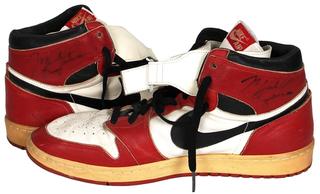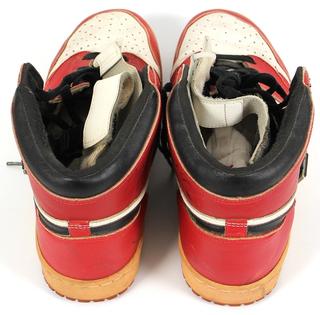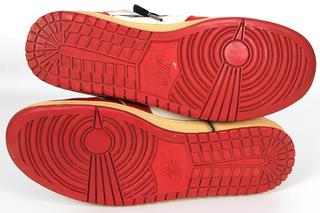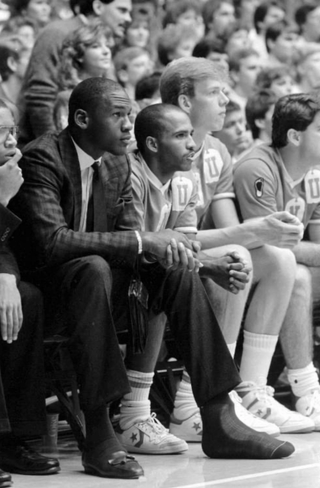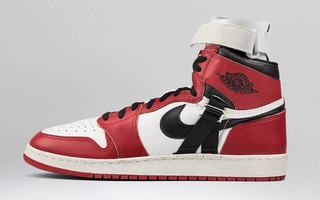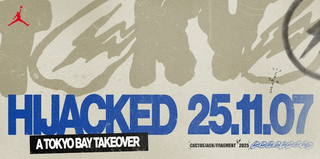The legend of Michael Jordan continues to be celebrated across the globe despite his (final) retirement from professional basketball over 20 years ago. With a career spanning 15 NBA seasons—replete with accolades, Olympic gold medals, and Larry O'Brien Championship Trophies—His Airness achieved a lot to admire, but the player turned billionaire businessman and worldwide sensation almost didn't.
A Freak Injury
On Oct. 29, 1985, Jordan broke his left foot in a game against the Golden State Warriors. Fresh off a successful tour in Europe that gave way to the "Shattered Backboard" story, the second-year Chicago Bull was ready to demonstrate that his Rookie of the Year distinction hadn't been luck. A fracture to his left navicular bone in just the third match of the 1985-86 NBA campaign, however, sat him down for the bulk of the season. As history tells it, MJ only played 18 games in that regular season. What history doesn't emphasize is that his career could've ended that year.
Navicular fractures are considered high-risk, even when treated properly. Their location in the mid-foot has limited blood supply, which complicates the healing process. Furthermore, the bone's crucial role in foot function means a permanent gap in the area (nonunion) can form if medical advice is ignored.
Knowing Michael Jordan's competitive spirit, it's no surprise he went against doctors' wishes.

Return to Chapel Hill
Following a proper diagnosis of his injury, a 22-year-old Jordan was often spotted in a suit-and-tie with a matching cast around his left foot on the Bulls' bench. Reflecting on his experience for ESPN's "The Last Dance" docu-series, MJ shared, "I was itching to do something. So, I talked the Bulls into let me go back to college."
Jordan underwent a guided rehabilitation process at the University of North Carolina. In the 1989 documentary Michael Jordan: Come Fly With Me, the second-year professional is shown training at his alma mater's facilities. Regular massages and stretching were accompanied by partial weight-bearing movements, sometimes in the pool.
There's a scene in the visual profile that shows the injured athlete carrying out aquatic therapy while wearing a standard pair of the Air Jordan 1.
Although Chicago Bulls staff had agreed to letting Mike recover and train in Chapel Hill, it was unaware of exactly how the 22-year-old was progressing.
"When I got back with the Bulls, my calf muscles and my injured calf was stronger than my uninjured calf," Jordan told EPSN. "So, the first thing they said, 'What in the hell you've been doing?'"
The former Tar Heel had been running full-court games sooner than he should have.
Back to the NBA
Michael Jordan suited up for the Bulls on March 15, 1986 after missing 64 games. In just 13 minutes, he put up 13 points.
His injury had been healing, but there was high-risk of a re-fracture. (Yao Ming retired prematurely due to nonunion in his navicular bone caused by a re-fracture in 2009.) To mitigate stress on his feet, Nike developed an experimental version of the first Air Jordan. The pair featured a robust nylon strap and aluminum buckle modification that ran from the midsole to the ankle, integrating with a leather-and-velcro brace.
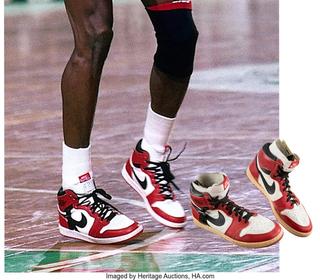
The tweaks enabled adjustable tightness while also enhancing mid-foot stability and weight distribution. The post-injury Jordan 1 must've worked because MJ had returned to a standard pair in time for Game 2 of the NBA Playoffs against the Boston Celtics.
On April 20, 1986, a rehabilitated #23 scored 63 points against Larry Bird and company at the Boston Garden. The performance—which Bird has described as "God disguised as Michael Jordan"—remains the record for highest points scored by a player in a single NBA Playoffs game.
Luckily for all, MJ's foot injury didn't end with a career cut short. Instead, it informed his game, reaffirmed his mental fortitude, and influenced subsequent designs for his signature sneaker line.
A Lasting Legacy
Over the years, Jordan Brand's parent company has previewed and released prototypes and samples from His Airness' expansive roster of models. In 2017, the brand showcased several unreleased editions from the Air Jordan series. Amongst them, a sample of MJ's post-injury sneaker.
A game-worn, signed pair of the modified Air Jordan 1 has appeared at auction during the last decade. On two different occasions, the rare sneaker fetched $55,000 and $379,757, joining the growing list of ultra-expensive Michael Jordan memorabilia.
It's improbable that Team Jumpman ever releases the ankle brace-donning retro to the public, but future items could reference the occasion similar to the Big Kids' Air Jordan 1 Mid "X-Ray" (available via StockX and KICKS CREW). Diehard fans have gone as far as customizing pairs of the "Chicago" colorway with velcro straps and metal buckles in an attempt at recreating history.
That'll have to do for now.
For more from the Jumpman, check out all remaining Jordan releases in the year—including Air Jordan 11 retros scheduled for a 30th anniversary celebration.
To shop all things Jordan Brand, visit Nike.com/Jordan.
